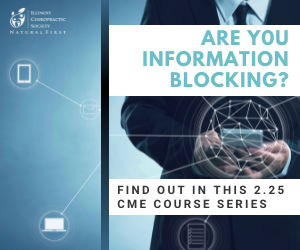
Iliotibial Band Revisited

Please use “Forty-four percent of patients treated conservatively report complete resolution at two months and 92% report resolution at six months.” For the blowout.
Iliotibial band syndrome describes an irritation of the tissues near the distal attachment of the iliotibial band (ITB). This overuse syndrome is particularly common in runners and cyclists. (1-3)
The iliotibial band is a conduit for forces generated by the TFL and gluteus maximus (i.e. thigh abduction, flexion, extension, and external rotation). The Iliotibial band begins as a sheath encasing the tensor fascia lata muscle. This sheath anchors the tensor fascia lata to the iliac crest and also receives the majority of the gluteus maximus tendon. (5) The dense fibrous ITB then courses distally and terminates at Gerdy’s tubercle on the anterolateral aspect of the tibia. (5) The deep fascial component, which attaches to nearly the entire length of the femur, is most taut when the gluteus maximus and TFL contract. This “tensile” action significantly increases during single leg stance and serves to counteract medial bowing of the femur, while lateral bowing is minimized by “compression.”. (4,6)
Etiological Theories
Earlier etiological theories (7) suggesting that ITB syndrome is a “friction syndrome” resulting in irritation to a distal bursa are wrong on two accounts – there is no bursa and the distal band does not undergo friction-inducing movement. (4) Contrary to popular opinion, the distal portion of the band does not “snap” back and forth during knee flexion and extension. (4,6) The illusion of a forward to backward displacement during flexion results from alternating tension between the TFL and gluteus. When the knee is straight or only slightly flexed, TFL tension predominates, causing the anterior fibers of the ITB to become more prominent. As the degree of knee flexion increases, tension from the gluteus maximus grows, and the posterior fibers of the ITB become more prominent. (Skeptical biomechanists can perform a self-demonstration by simultaneously palpating the anterior and posterior aspects of their ITB while slowly squatting from a single leg standing position.)
Current explanations for the genesis of ITB syndrome focus on compression of a highly innervated fat pad between the ITB and epicondyle that is compressed when the band is taut. (4,8) Other etiological theories include a “traction periostitis” or “enthesopathy” from tensile strain on the femoral attachment of the distal ITB (similar to Achilles tendinopathy). (4)
Who is at risk?
ITB syndrome is common in populations exposed to repetitive knee flexion and extension while in a single leg stance. (9) The problem is particularly prevalent in runners, where it compromises almost ¼ of all lower extremity injuries. (2,3,10-17) Ultimately, ITB syndrome affects up to 12% of all runners. (10) The condition is also frequently seen in cycling, weight lifting, skiing, soccer, basketball, field hockey, and competitive rowing. (16,18-20)
Risk factors for the development of ITB syndrome include TFL hypertonicity, high mileage running, running on a circular track, and weakness of the knee extensors, flexors, or hip abductors. (1,22) Weak hip abductors allow relatively excessive adduction of the thigh and internal rotation of the knee during the stance phase of gait. This leads to increased tension on the ITB with a predisposition for a compressive irritation of the tissues underneath. (8) Unlike most lower chain problems, foot hyperpronation does not seem to be a problem – in fact, research suggests ITB syndrome is more likely in populations with high arches. (23)
Symptoms
The typical presentation for ITB syndrome is a runner or cyclist complaining of “sharp” or “burning” pain approximately 2 cm superior to the lateral joint line of the knee – near the lateral femoral condyle. (9) Pain may radiate slightly proximally or distally. (9) Symptoms are provoked by activities that require repetitive knee flexion and extension. Symptoms are more likely as activities proceed. (9) Less severe presentations may report pain only during activity, but as the condition progresses, symptoms become more persistent.
The clinical evaluation will demonstrate tenderness to palpation over the lateral femoral epicondyle. Noble’s test involves compression of the distal ITB against the lateral femoral epicondyle while the patient’s knee is flexed and extended. (24,25) Pain during Noble’s test is often reproduced or intensified at 30 degrees of flexion, as this is thought to be the position of peak compression. (4,26) Clinicians should palpate the entire length of the iliotibial band for additional sites of irritation or myofascial adhesion. Hypertonicity is common in hip abductors, TFL, and psoas. Ober’s test or Thomas test may be used to assess for hypertonicity in these muscles. Hip abductor weakness is commonly associated with ITB pain and clinicians must screen for functional deficits in this muscle. (27,28)
Imaging
Plain film imaging is generally not required or beneficial for the diagnosis of iliotibial band syndrome. MRI may be useful to rule out alternative diagnoses, or in patients who do not respond to a trial of conservative care. (29) MRI findings for ITB syndrome include edema over the lateral epicondyle (deep to the ITB) or thickening of the distal ITB. (29) Ultrasonography may be an alternate means of imaging the iliotibial band. (29)
Treatment
Forty-four percent of patients treated conservatively report complete resolution at two months and 92% report resolution at six months. (31) Conservative management includes modalities, activity modification, stretching, and hip abductor strengthening. (31-34) Anti-inflammatory modalities and ice may help to relieve acute inflammation. The use of pharmaceutical anti-inflammatories, including NSAIDs or corticosteroids may provide symptomatic relief for ITB syndrome patients. (34) Clinicians should use discretion in recommending NSAIDs to patients with “sprain/ strain” injuries as concerns exist regarding the possibility that these drugs may delay the healing of damaged tendons. (35,36) Treatment of recalcitrant cases may include corticosteroid injections, which have demonstrated benefit in treating ITB syndrome. (37)
The dense fibrous iliotibial band is extremely resistant to stretch (less than 0.2% with maximum voluntary contraction), so flexibility gains must come from the tensor fascia lata and gluteal muscles. (38) Incorporating deep tissue massage or myofascial release prior to stretching may enhance flexibility gains. (39-41) The use of foam rollers or massage sticks may help promote flexibility and decrease stiffness throughout the iliotibial band. (6) Dry needling may improve outcomes. (38) IASTM over the band, particularly the distal component, may provide additional benefit. Identification and resolution of joint restrictions are appropriate for the lumbar, sacroiliac, and lower extremity. Clinicians should assess for leg length inequality and consider a heel lift for structural deficits.
Perhaps the single most important aspect of treatment includes strengthening the hip abductors and external rotators. (32) The vast majority of patients who incorporate hip abductor strengthening into their ITB rehab will experience symptom resolution within six weeks. (32,33) Hip abductor strengthening should include eccentric contractions and triplanar motions. Examples of hip abductor strengthening exercises include side-bridge, posterior lunge, and clam exercises. (33)
Activity modification may require a lower duration of exercise but not necessarily pace. Fast-paced running is less likely to aggravate ITB problems when compared to slower “jogging.” (33) Patients should begin slowly and increase their distance by no more than 10% per week. Runners should minimize downhill running and avoid running on a banked surface like the crown of a road or indoor track. Running on a small circular track causes the inner leg’s ITB to work harder to prevent it from swinging medially. If track work is unavoidable, runners should reverse directions each mile. Athletes should avoid running on wet or icy surfaces as these require greater TFL activation for stabilization. Runners must avoid “crossover” gaits, which have been shown to aggravate iliotibial band problems. Cyclists may need to adjust the seat height and avoid “toe-in” pedal positions. Initially, patients should avoid stair climbers, squats, and deadlifts. Athletes should consider new training shoes, particularly if the current shoes have in excess of 300 miles or show signs of wear on the lateral heel.
References
1. S. P. Messier, D. G. Edwards, D. F. Martin et al., “Etiology of iliotibial band friction syndrome in distance runners,” Medicine and Science in Sports and Exercise, vol. 27, no. 7, pp. 951–960, 1995.
2. Ellis R, Hing W, Reid D. Iliotibial band friction syndrome–a systematic review. Man Ther. Aug 2007;12(3):200-8.
3. Hamill J, Miller R, Noehren B, Davis I. A prospective study of iliotibial band strain in runners. Clin Biomech (Bristol, Avon). Jun 24, 2008
4. Fairclough J, Hayashi K, Toumi H, et al. The functional anatomy of the iliotibial band during flexion and extension of the knee: implications for understanding iliotibial band syndrome. J Anat, 2006;208:309-316.
5. Standring S. Gray’s Anatomy: The Anatomical Basis of Clinical Practice. 39. Edinburgh: Elsevier/Churchill Livingstone; 2004.
6. Michaud T. The Real Cause of Iliotibial Band Syndrome Dynamic Chiropractic November 18, 2012, Vol. 30, Issue 24
Fetto J, Leali A, Moroz A Evolution of the Koch model of the biomechanics of the hip: clinical perspective. J Orthop Sci. 2002; 7(6):724-30.
7. Drogset JO, Rossvoll I, Grøntvedt T Surgical treatment of iliotibial band friction syndrome. A retrospective study of 45 patients. Scand J Med Sci Sports. 1999 Oct; 9(5):296-8.
8. Fetto J, Leali A, Moroz A Evolution of the Koch model of the biomechanics of the hip: clinical perspective. J Orthop Sci. 2002; 7(6):724-30.
9. M. Fredericson and A. Weir, “Practical management of iliotibial band friction syndrome in runners,” Clinical Journal of Sports Medicine, vol. 16, no. 3, pp. 261–268, 2006
10. Linenger JMCC. Is iliotibial band syndrome overlooked? Phys Sports Med. 1992;20:98–108.
11. Orava S. Iliotibial tract friction syndrome in athletes-an uncommon exertion syndrome on the lateral side of the knee. Br J Sports Med. 1978;12:69–73.
12. McNicol K, Taunton J, Clement D. Iliotibial tract friction syndrome in athletes. Can J Appl Sport Sci. 1981;6(2):76–80.
13. Messier SP, Edwards DG, Martin DF, Lowery RB, Cannon DW, James MK, et al. Etiology of iliotibial band friction syndrome in distance runners. Med Sci Sports Exerc. 1995;27:951–960.
14. Fredericson M, Cookingham CL, Chaudhari AM, et al. Hip abductor weakness in distance runners with iliotibial band syndrome. Clin J Sports Med. 2000;10:169–175.
15. Taunton J, Ryan M, Clement D, McKenzie D, Lloyd-Smith D, Zumbo B. A retrospective case-control analysis of 2002 running injuries. Br J Sports Med. 2002;36(2):95–101.
16. Orchard JW, Fricker PA, Abud AT, Mason BR. Biomechanics of iliotibial band friction syndrome in runners. Am J Sports Med. 1996;24:375–379.
17. Fredericson M, Wolf C. Iliotibial band syndrome in runners: innovations in treatment. Sports Med, 2005;35:451-459.
18. Holmes JC, Pruitt AL, Whalen NJ. Iliotibial band syndrome in cyclists. Am J Sports Med. 1993;21(3):419–424.
19. Devan MR, Pescatello LS, Faghri P, Anderson J. A prospective study of overuse knee injuries among female athletes with muscle imbalances and structural abnormalities. J Athl Train. 2004;39(3):263–267.
20. Rumball JS, Lebrun CM, DiCiacca SR, Orlando K. Rowing injuries. Sports Med. 2005;35(6):537–555.
22. M. Fredericson, C. L. Cookingham, A. M. Chaudhari, B. C. Dowdell, N. Oestreicher, and S. A. Sahrmann, “Hip abductor weakness in distance runners with iliotibial band syndrome,” Clinical Journal of Sports Medicine, vol. 10, no. 3, pp. 169–175, 2000
23. Ferber R, Noehren B, Hamill J, et al. Competitive female runners with a history of iliotibial band syndrome demonstrate atypical hip and knee kinematics. J Orthop Sports Phys Ther, 2010;40:52.
24. Strauss EJ, Kim S, Calcei JG, Park D. Iliotibial band syndrome: evaluation and management. J Am Acad Orthop Surg. 2011;19:728–736.
25. Lavine R. Iliotibial band friction syndrome. Curr Rev Musculoskelet Med. 2010;3:18–22.
26. Fredericson M, Wolf C. Iliotibial band syndrome in runners: innovations in treatment. Sports Med. 2005;35:451–459
27. MacMahon JM, Chaudhari AM, Andriacchi TP. Biomechanical injury predictors for marathon runners: striding towards iliotibial band syndrome injury prevention. Conference of the International Society of Biomechanics in Sports, Hong Kong; June 2000.
28. Noehren B, Davis I, Hamill J. Prospective study of the biomechanical factors associated with iliotibial band syndrome. Clin Biomech. 2007;22:951–956.
29. Ellis R, Hing W, Reid D. Iliotibial band friction syndrome–a systematic review. Man Ther. 2007;12:200–208.
30. Strauss EJ, Kim S, Calcei JG, Park D. Iliotibial band syndrome: evaluation and management. J Am Acad Orthop Surg. 2011;19:728–736.
31. Beals C, Flanigan D. A Review of Treatments for Iliotibial Band Syndrome in the Athletic Population Journal of Sports MedicineVolume 2013
32. Fredericson M, Cookingham C, Chaudhari A, et al. Hip abductor weakness in distance runners with iliotibial band syndrome. Clin J Sports Med, 2000;10:169-175.
33. Fredericson M, Wolf C. Iliotibial band syndrome in runners: innovations in treatment. Sports Med. 2005;35(5):451-9.
34. Ellis R, Hing W, Reid D. Iliotibial band friction syndrome—a systematic review. Man Therapy. 2007;12:200–208.
35. Almekinders L. An in vitro investigation into the effects of repetitive motion and non-steroidal anti-inflammatory medication on human tendon fibroblasts. Am J Sports Med. 1995;23:119–123.
36. Kulick M. Oral ibuprofen: evaluation of its effect on peritendinous adhesions and the breaking strength of a tenorrhaphy. J Hand Surg. 1986;11A:110–119.
37. Gunter P, Schwellnus MP. Local corticosteroid injection in iliotibial band friction syndrome in runners: a randomized controlled trial. Br J Sports Med. 2004;38:269–272
38. Falvey E, Clark R, Franklyn-Miller A, et al. Iliotibial band syndrome: an examination of the evidence behind a number of treatment options. Scand J Med Sci Sports, 2010;20:580-587
39. Hopper D, Deacon S, Das S, et al. Dynamic soft tissue mobilization increases hamstring flexibility in healthy male subjects. Br J Sports Med, 2005;39:594-598.
40. Guler-Uysl F, Kozanoglu E. Comparison of the early response to two methods of rehabilitation for adhesive capsulitis. Swiss Med Wkly, 2004;134:363-368.
41. Chang A, Hayes K, et al. Hip abduction moments and protection against medial tibiofemoral osteoarthritis progression. Arth Rheum, 2005;52:3515-3519.















